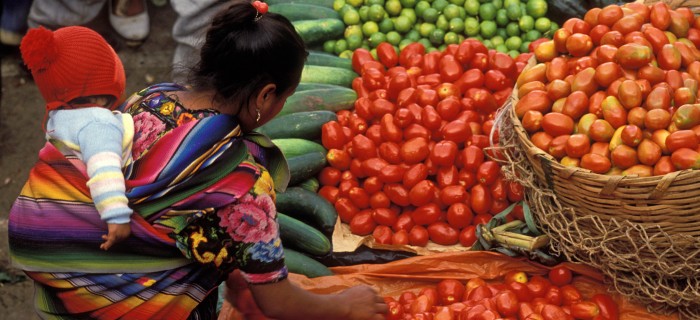From Food Rebellions to Food Sovereignty: Urgent Call to Fix a Broken Food System
Food First Backgrounder, Spring 2008, Vol. 14, No. 1
The skyrocketing cost of food has resurrected the specter of the “food riot.” The World Bank reports that global food prices rose 83% over the last three years and the FAO cites a 45% increase in their world food price index during just the past nine months. The Economist’s comparable index stands at its highest point since it was originally formulated in 1845.2 As of March 2008, average world wheat prices were 130% above their level a year earlier, soy prices were 87% higher, rice had climbed 74%, and maize was up 31%. Not surprisingly, people have taken to the streets in Mexico, Italy, Morocco, Mauritania, Senegal, Indonesia, Burkina Faso, Cameroon, Yemen, Egypt, and Haiti. Over 100 people have been killed and many more injured. In Haiti, the poorest country in the western hemisphere, with food prices increases of 50-100%, driving the poor to eat biscuits made of mud and vegetable oil, angry protestors forced the Prime Minister out of office.
The food crisis will get worse before it gets better. Without massive, immediate injections of food aid, 100 million people in the Global South will join the swelling ranks of the word’s hungry. But the protests are not simply crazed “riots” by hungry masses. Rather they are angry demonstrations against high food prices in countries that formerly had food surpluses, and where government and industry are unresponsive. They reflect demands for food sovereignty: people’s political and economic right to determine the course of their own food systems.
There is food on the shelves but people are priced out of the market. – World Hunger Program’s Executive Director Josette Sheeran
The food crisis appeared to explode overnight, reinforcing fears that there are just too many people in the world. But according to the FAO, with record grain harvests in 2007, there is more than enough food in the world to feed everyone—at least 1.5 times current demand. In fact, over the last 20 years, food production has risen steadily at over 2.0% a year, while the rate of population growth has dropped to 1.14% a year. Population is not outstripping food supply. “We’re seeing more people hungry and at greater numbers than before,” says World Hunger Program’s executive director Josette Sheeran, “There is food on the shelves but people are priced out of the market.”
The immediate reasons for food price inflation include: droughts in major wheat-producing countries in 2005-06; low grain reserves (we have less than 54 days worth, globally); high oil prices; a doubling of per-capita meat consumption in some developing countries; and the diversion of 5% of the world’s cereals to agrofuels. Though an increase in agricultural growth is projected for 2008, most experts agree food prices will continue to rise. Drought, meat diets, low reserves, and agrofuels are only the proximate causes of food price inflation. These factors do not explain why—in an increasingly productive and affluent global food system—next year up to one billion people will likely go hungry. To solve the problem of hunger, we need to address the root cause of the food crisis: the corporate monopolization of the world’s food systems.


 Help Food First to continue growing an informed, transformative, and flourishing food movement.
Help Food First to continue growing an informed, transformative, and flourishing food movement.




